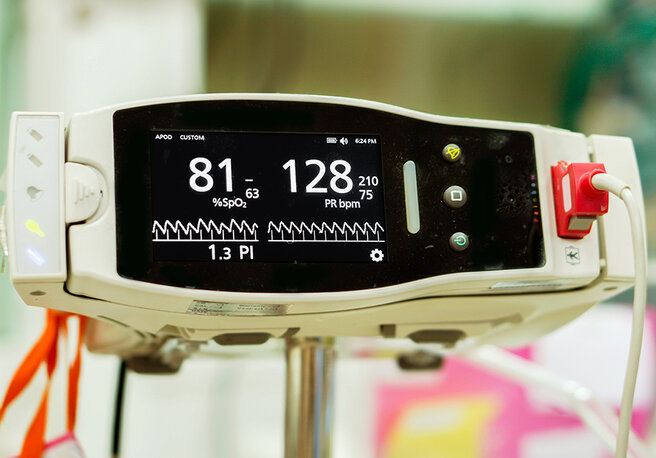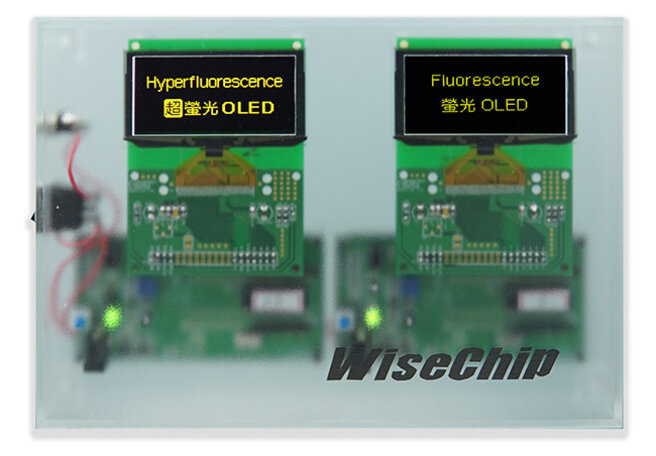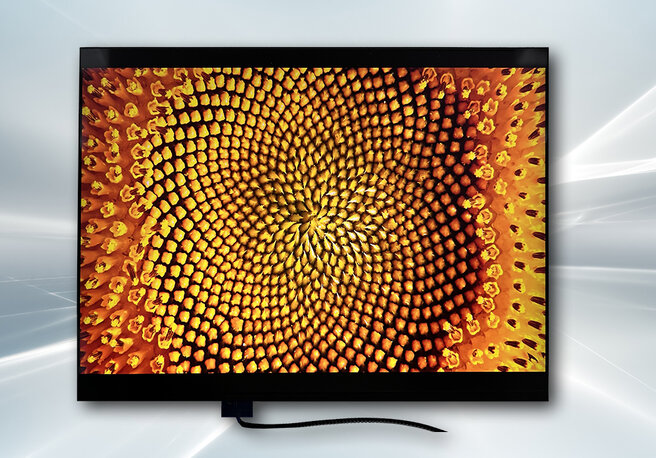OLED Displays
Low Power & High Contrast
OLED technology is familiar from consumer devices such as smartphones and TVs. While these are customer-specific active matrix (AM) displays that are used in large quantities, passive matrix (PM) displays are also available in small quantities as a standard product. They are ideal for devices that require an easy-to-read display with a low to medium level of complexity and good readability. They are available in monochrome versions in various colors, e.g. white, yellow, green, light blue and orange, but also in RGB color. Thanks to simple technology, customer-specific layouts can also be developed for moderate quantities, ranging from segmented displays with application-specific icons to full graphic displays. Control is simple as the controller is already integrated.
OLED displays can be used for a wide range of products from all sectors, such as household appliances, kitchen appliances, tools, handheld measuring devices and medical technology. They are ideal for IoT devices, such as displaying battery level, IP address, link status and more.
Key Features
- Self-luminous: no backlight required
- High contrast: >10,000:1
- Sunlight readable
- Low power consumption: Ø 500mW (ideal for battery operation)
- Free viewing angle 180
- Fast switching time
- From simple segmented display to full graphics
- Monochrome in different colors or full color
- Narrow bezel
- Long lifetime
- Simple interface: Can be controlled with any micro-controller
- Much cheaper than comparable TFT
- Wide temperature range (-40°C...+85°C)
- Sizes from 0.6" to 5.8"
Hyperfluorescent OLED display
for long life applications
HY-LINE presents the world's first commercial product with 4th generation hyperfluorescent OLED light emission technology. This makes OLED displays even more suitable for long life applications.
Specifications
- Diagonal: 2,7"
- Resolution: 128x64
- Brightness: 220 cd/m2
- Lifetime: 200,000 h
Key Features
- Higher efficiency: 2.5x brighter than standard PMOLED with the same power consumption
- With standard brightness: Lower power consumption = longer battery life
- Longer lifetime: wider application range than standard OLED, longer service life
Whitepaper: Don't be afraid of OLED! (Ger)
Definition - Functionality - Properties - Control - Applications
This white paper looks at how OLED technology works, its fundamental differences from LCD, and goes into detail about issues such as lifetime, control, interfaces and applications. Tricks and strategies for handling such as possibilities for extending the service life are also examined in detail.
OLED: The next generation
Advanced Thin OLED (ATO)
Peak brightness, burn-in behavior and power consumption: these characteristics of active matrix OLED displays are a disadvantage that prevents them from being used universally.
LG Display has addressed precisely these values and optimized the technology. The result is the ATO, Advanced Thin OLED. Two OLED layers stacked on top of each other create the luminous pixels in tandem. One plus one equals more than two: the double pack as an integrated structure achieves a higher brightness with a consistently excellent black level. This results in excellent contrast.
At their peak, displays achieve brightness values that make them suitable for (certified) HDR reproduction. On average, the cooperation of two layers means that the material is subjected to less stress, which results in a longer service life. At the same time, the power consumption is reduced, making the displays particularly suitable for use in energy-saving devices. An interesting side effect is the low installation depth and weight.
Thanks to the high contrast and wide color gamut, the displays are suitable for applications where the exact reproduction of color values is important, such as in medical imaging procedures (ultrasound, MRI/CT, X-ray). The fine pixels ensure a high resolution for a detailed display.
Transparent Displays
T-OLED, Microdisplays, TLM
Displays impress with their luminosity, high resolution and brilliant colors. They have one thing in common: when they are turned off, a black hole remains. You can't see through them. Transparent displays, on the other hand, are available in various technologies. Similar to a pair of glasses for augmented reality, it can allow you to see through to the workpiece on a machine or to the exhibits in a shop window while providing additional information about them.
The use cases are as varied as the technologies: shop windows for the presentation of goods, fronts of elevators or windows in building technology, "augmented reality" at the machine or safety through through-view in public areas.
Are you looking for transparent OLED displays? You can find all the information you need here:
Neo:LED makes OLED competition
OLED + TFT = Neo:LED
OLEDs have excellent optical properties: Brilliant colors, deep black levels, high contrast. However, there are some disadvantages that make them unsuitable for a wide range of industrial applications: The burn-in behavior makes them less useful for permanently displayed content such as the basic menu of a machine, and the peak brightness is not always sufficient to dominate in incident sunlight.
With its Neo:LED display technology, LG Display shows that the disadvantages of OLED displays can be combined with the advantages of TFT technology to offer the best of both worlds.
The internal panel structure has been optimized based on IPS. This brings the optical properties close to OLED, which is also indicated by the chosen name. With a very wide color space of 99.5% DCI and a high contrast of 2000, applications can be implemented that place high demands on image quality but where the use of OLED is not possible. In addition, the power consumption, which is mainly determined by the backlight in a TFT display, has been significantly reduced.
In addition to handheld devices with a low energy profile, medical devices for imaging procedures (ultrasound, MRI/CT, X-ray) also benefit from this.
Consulting and contact
Your wishlist is empty






